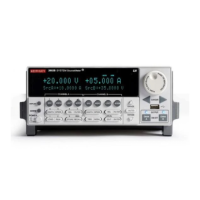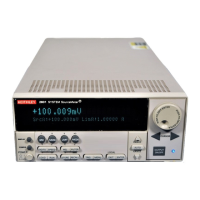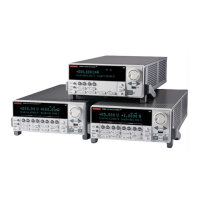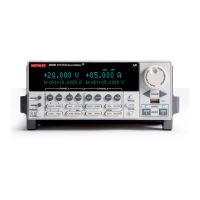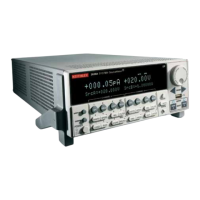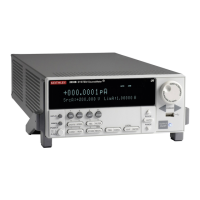System SourceMeter® Instrument Reference Manual Section 7:
2600BS-901-01 Rev. C / August 2016 7-19
Details
Assigning a value to this attribute enables or disables the reading buffer cache. When enabled, the
reading buffer cache improves access speed to reading buffer data.
If you run successive operations that overwrite reading buffer data, the reading buffer may return
stale cache data. This can happen when initiating successive sweeps without reconfiguring the
sweep measurements or when overwriting data in the reading buffer by setting the
bufferVar.fillmode attribute to smuX.FILL_WINDOW. To avoid this, make sure that you include
commands that automatically invalidate the cache as needed (for example, explicit calls to the
bufferVar.clearcache() function) or disable the cache using this attribute
(bufferVar.cachemode).
Example
smua.nvbuffer1.cachemode = 1
Enables reading buffer cache of
dedicated reading buffer 1
(source-measure unit (SMU)
Also see
bufferVar.clearcache() (on page 7-20)
bufferVar.fillmode (on page 7-24)
Reading buffers (on page 3-6)
bufferVar.capacity
This attribute contains the capacity of the buffer.
Type TSP-Link accessible Affected by Where saved Default value
Usage
bufferCapacity = bufferVar.capacity
The maximum number of readings the buffer can store
The reading buffer; can be a dynamically allocated user-defined buffer or a
Details
This read-only attribute reads the number of readings that can be stored in the buffer.
For dedicated reading buffers, all buffer attributes are saved to nonvolatile memory only when the
reading buffer is saved to nonvolatile memory.
The buffer's capacity does not change as readings fill the buffer. A dedicated reading buffer that only
collects basic items can store over 140,000 readings. Turning on additional collection items, such as
timestamps and source values, decreases the capacity of a dedicated reading buffer (for example,
smua.nvbuffer1), but does not change the capacity of a user-defined dynamically allocated buffer.
A user-defined dynamically allocated buffer has a fixed capacity that is set when the buffer is created.
See the smuX.nvbufferY attribute for details on accessing dedicated reading buffers. See the
smuX.makebuffer() function for information on creating user-defined dynamically allocated
reading buffers.
